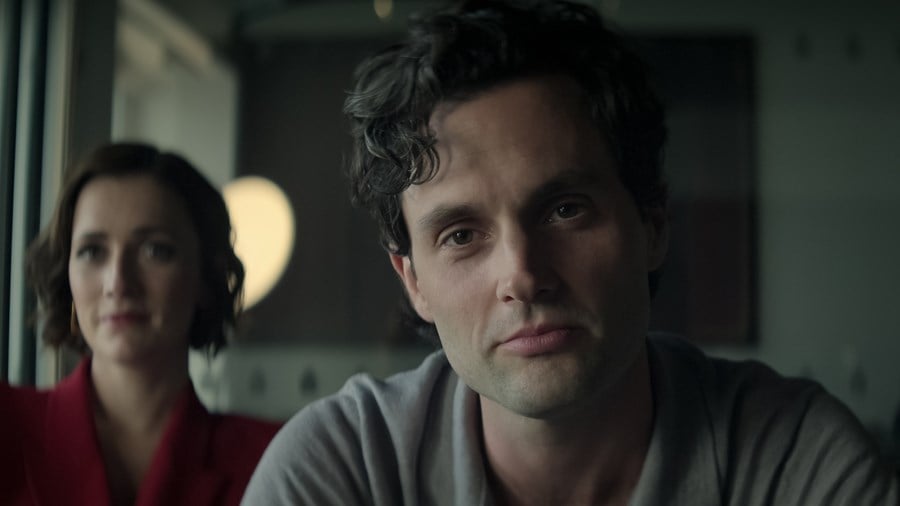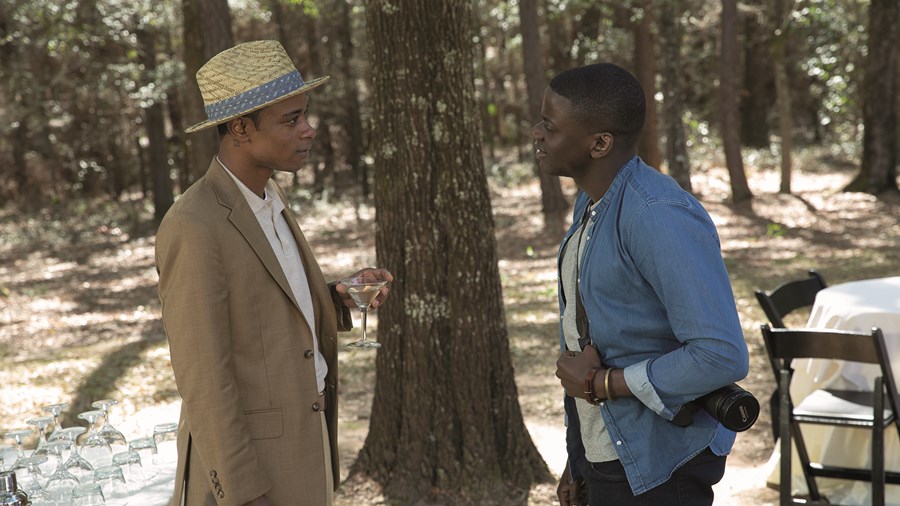With Infinity Pool in cinemas this week, Sophie Monks Kaufman delves into how horror films borrow from Freud and grapple with the meaning of the uncanny – to fearsome effect.

The most nightmarish scene in David Cronenberg’s Dead Ringers (1988) is an actual nightmare. Beverly (Jeremy Irons) is asleep naked with his new love Claire (Geneviève Bujold), but dreams their bed contains an extra version of him. Identical twin Elliot (also Irons) is physically conjoined to him by a cord of visceral sinew. Dream Claire tries to bite through it to separate the twins. Beverly wakes up with a cry. Real Claire wakes up and gives him a barbiturate to lull him back off to sleep. ‘Don’t let me dream that again,’ he murmurs in the grip of childlike terror.
Bev might have lived for longer if, instead of medicating away the dream, he heeded it as a warning shot fired from his subconscious. Since childhood, he and his haughty mirror image Elliot have shared everything: women, drugs, a successful gynaecology practice. Their status as twins – based on the real story of Stewart and Cyril Marcus – gives them a rational reason for co-existing as each other’s visual echo, yet Cronenberg, true to form, plays with the Freudian idea of the ‘double’, a trope so rich in symbolic meaning that it is a mainstay of horror and horror-adjacent cinema. (Dead Ringers is generally classified as a psychological thriller.)

Not every use of the ‘double’ can be deemed a wild success. Certain storytellers (that I will be too polite to mention here) use doppelgängers/clones/divided selves as one more half-baked ingredient in a gory stew designed to repulse the audience into submission. Yet, within a more thoughtful framework, the use of a ‘double’ and freaky films in general, can do the opposite: they can invite you to grapple with the meaning of the uncanny, making legible profound existential forces.
Shahadi Wright Joseph slowly turning to see her funhouse mirror image in Jordan Peele’s Us (2019); Natalie Portman standing still while her reflection bends sideways in Darren Aronofsky’s Black Swan (2010); Susannah York watching herself from a hill in Robert Altman’s Images (1972). These are sequences from within thematically ambitious films. What’s more, their creators know how to distil ideas into cinematic moments so chilling that the shiver never quite leaves your spine.

Black Swan (2010)
‘The most horrifying thing that you could encounter is a vision of yourself in another body,’ says Dr Kelli Weston, whose 2022 thesis was on horror cinema. She is talking about the arguments presented by the father of psychoanalysis Sigmund Freud in his essay collection The Uncanny (1973). As Freud himself put it:
‘The quality of uncanniness can only come from circumstances of the “double” being a creation dating back to a very early mental stage, long since left behind, and one, no doubt, in which it wore a more friendly aspect. The “double” has become a vision of terror, just as after the fall of their religion the gods took on demonic shapes.’
In other words: at the heart of horror are the oldest parts of yourself, the ones that resist all attempts at sophistication and transcendence. Their resurgence, per Freud, ‘signals the return of various repressed experiences’. Per Weston, ‘when you encounter the “double” you feel as though you are being taken back to this place that you don’t really remember. There's a sense of “I recalled this thing that I don't even know happened to me” and that's the eeriness of it.’

Dead Ringers (1988)
Beverly has the nightmare about being umbilically attached to Elliot at a pivotal moment. By pursuing a relationship with Claire, he is trying to be independent of a tie that has bound him since childhood. When his twin looms in his nightmare to menace this fledgling effort, it is a reminder that he is locked in a ‘till death do us part’ genetic attachment or – to interpret Elliot less as a brother and more as a ‘double’ – we could say that he cannot escape the destiny set in motion by the past. Within the film’s melancholic sensibility, the ringers are moving inexorably towards death. This ominous mood intensifies in the final act with foreboding writ large by Howard Shore’s wrenching score and Irons’ double-whammy of off-the-leash performances showing what it looks like to be in a suicide spiral with yourself.
Dr Kelli Weston understands the presence of a ‘double’ as tied up with ideas of life and death. ‘For a man in particular, the most uncanny place is the womb because it reminds them of birth – and birth is like death. There are all of these competing and collapsing ideas that lead to the idea that encountering the “double” is an omen of death. It is the foreboding thing because it reminds you of your own mortality.’

You S4 (2023)
A ‘double’ does not have to be a carbon copy of its prime to conjure the spectre of death. Penn Badgley looking into a window and seeing his own personal Mr Hyde reflected back at the end of You S4 (2023) underlines the series’ theme of personal duality being at its deadliest when a violent man is camouflaged by his beauty – in this way, it takes the baton from Oscar Wilde’s enduring novel The Picture of Dorian Grey (1891). Elsewhere, Jordan Peele’s Get Out (2017), like Don Siegel’s Invasion of the Body Snatchers (1956) and Bryan Forbes’ The Stepford Wives (1975), derives horror from the notion that a familiar body can be a vessel for a coloniser, an alien or the void itself.

Get Out (2017)
These concepts are woven into stories built with careful attention to craft and worldbuilding, bearing out Weston’s point that there are greater indicators of quality than the presence of a ‘double’, per se. As she says, ‘It's not about how the “double” is utilised so much as other things that are happening in the film.’ In reference to Us, in which the funhouse version of Joseph proves to be from an underground population named ‘the Tethered’, she says, ‘Us is really rich and fascinating, not necessarily because of the “double” itself, but it’s this film about slavery and the connection between privilege and exploitation, and it is using the “double” to enrich and animate those themes.’
To return to the darkened bedroom where it all began, the gulf between who we consciously want to be and the nightmare self running amok as we sleep is something that most thinking people are vaguely aware of and yet try to suppress. Films like Dead Ringers and Us dare to integrate the uncanny into the realm of conscious storytelling, titrating mortal terror in a way that is – strangely – life-affirming.
WATCH INFINITY POOL IN CINEMAS




